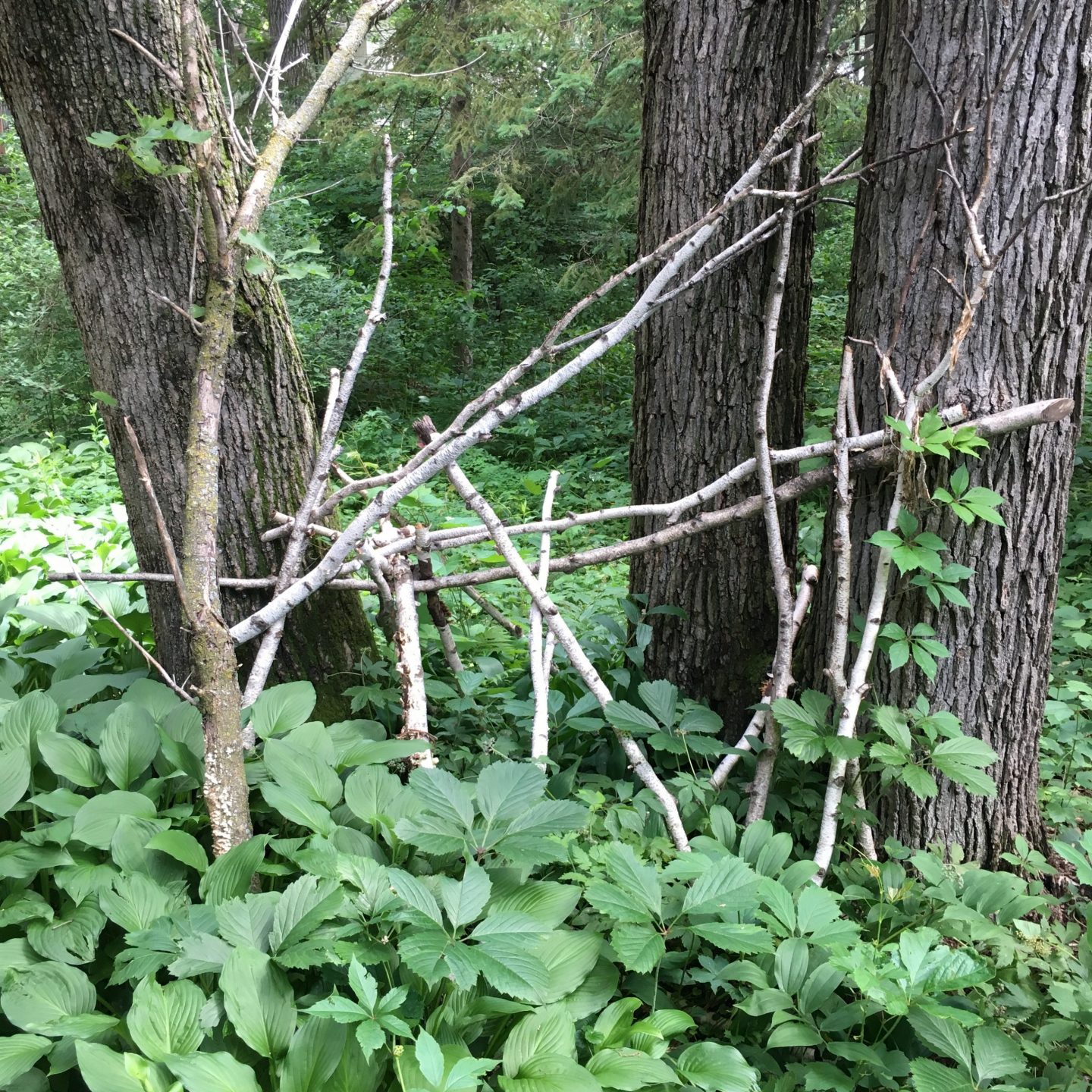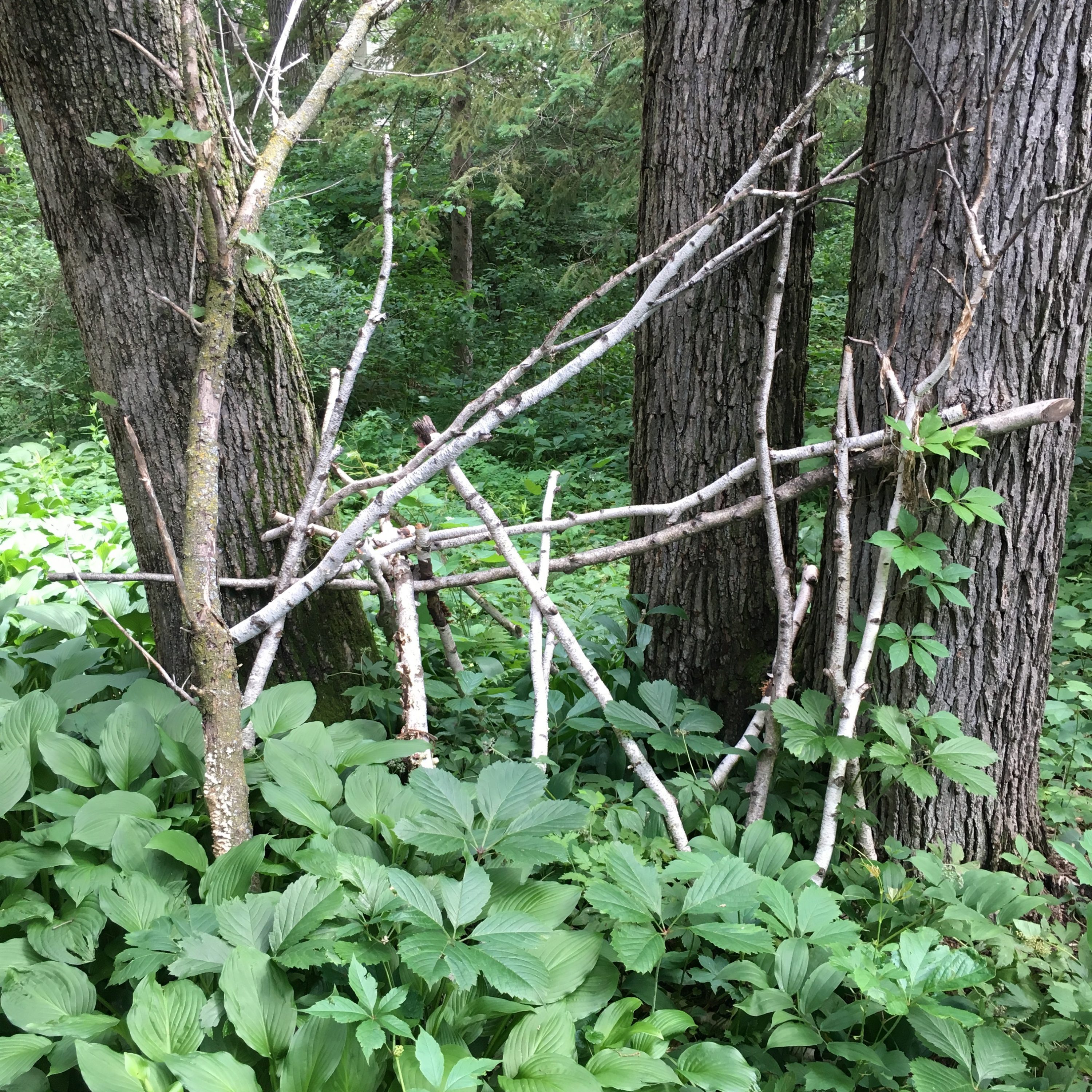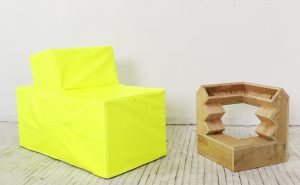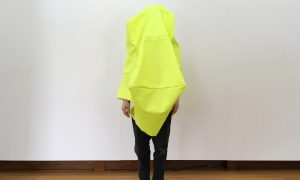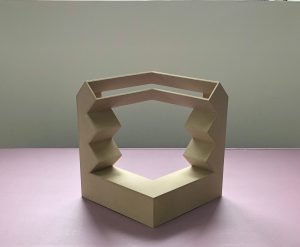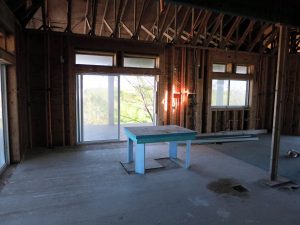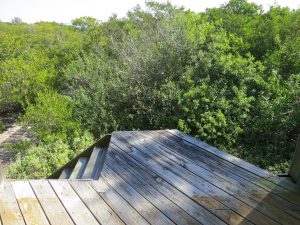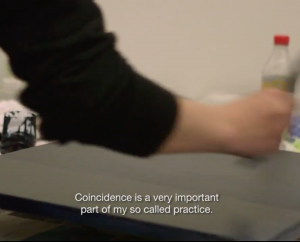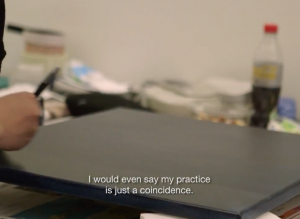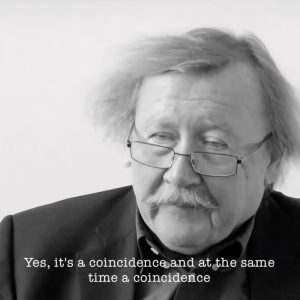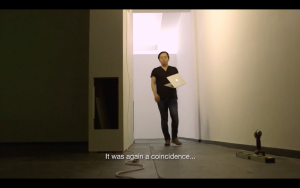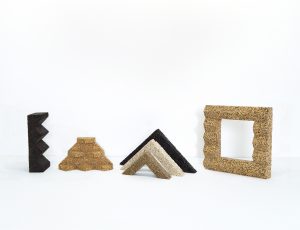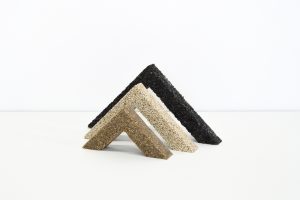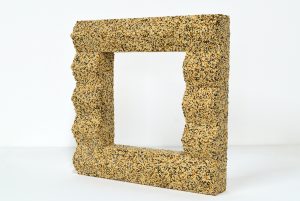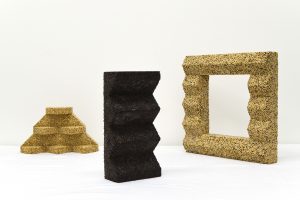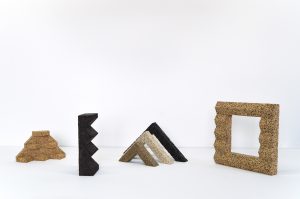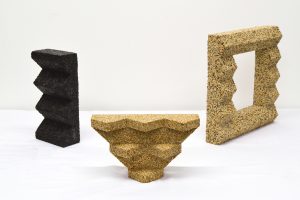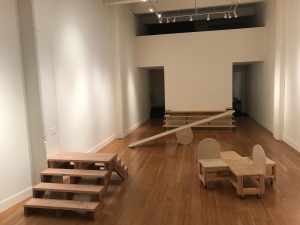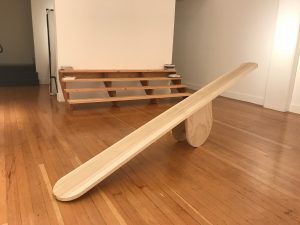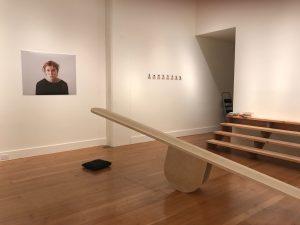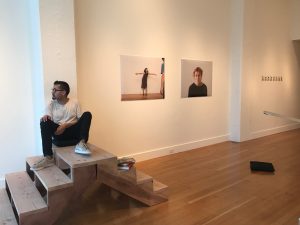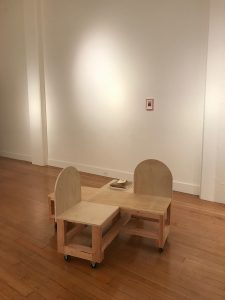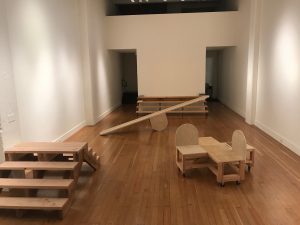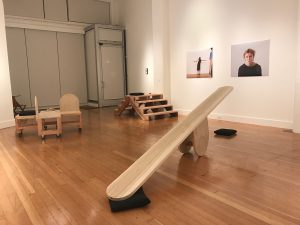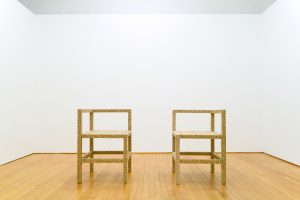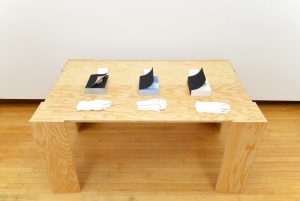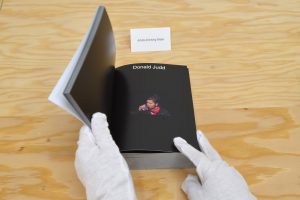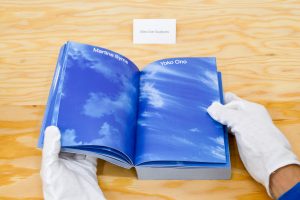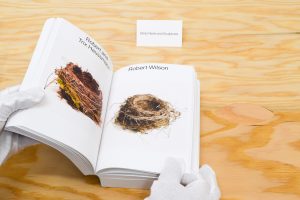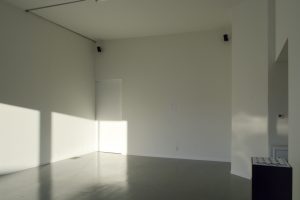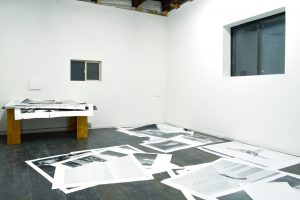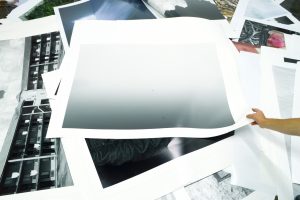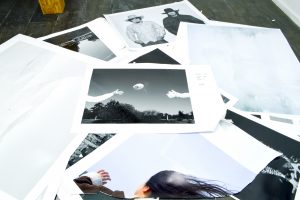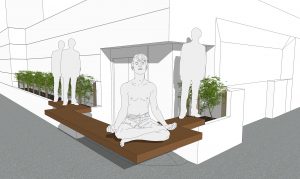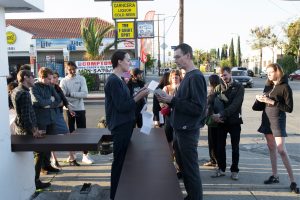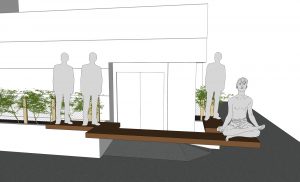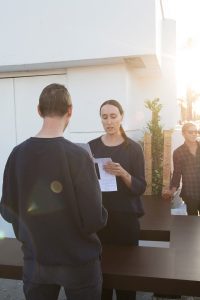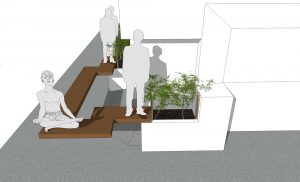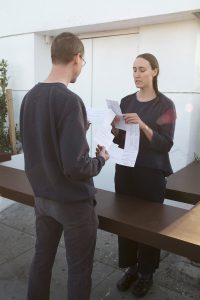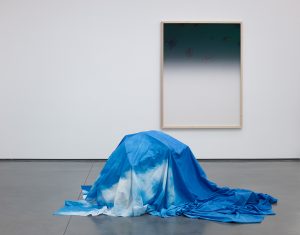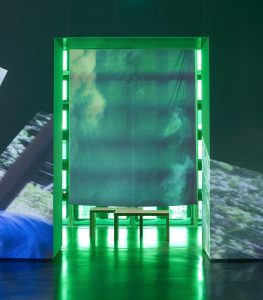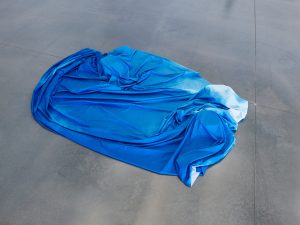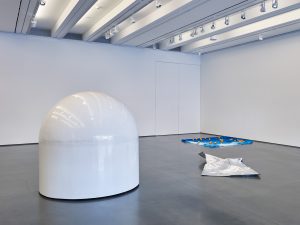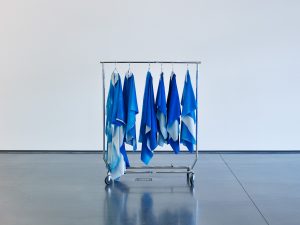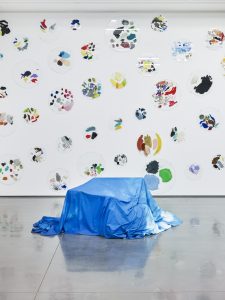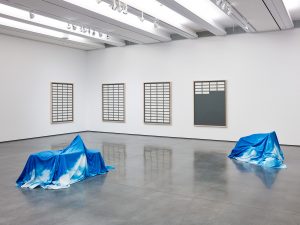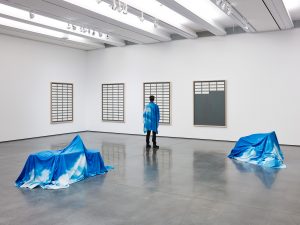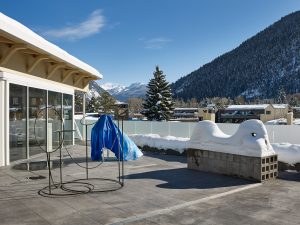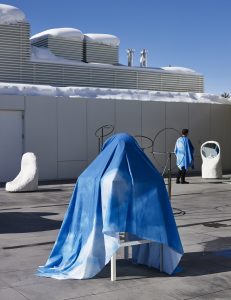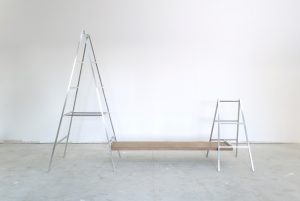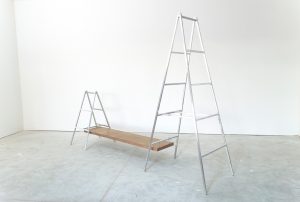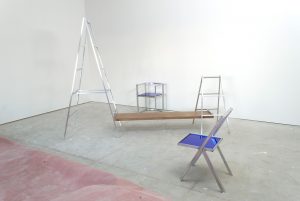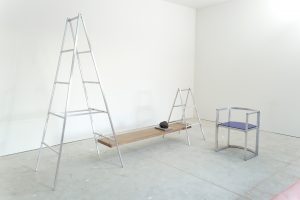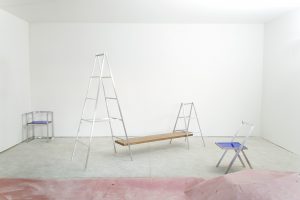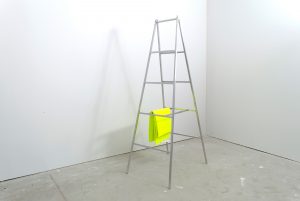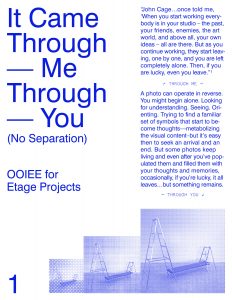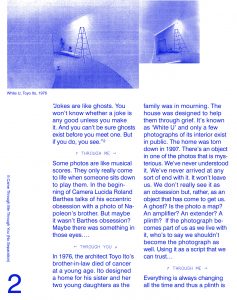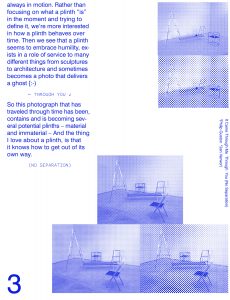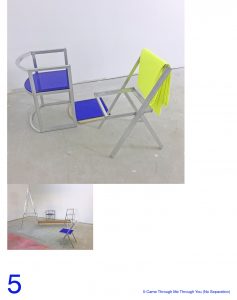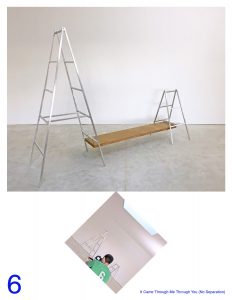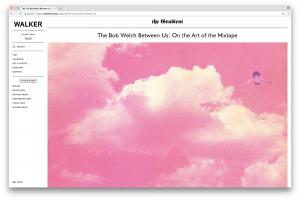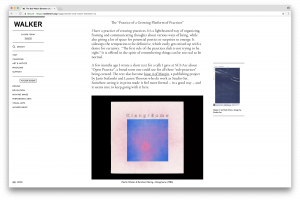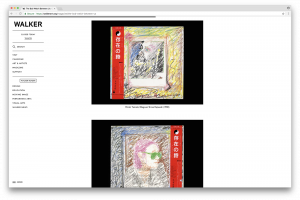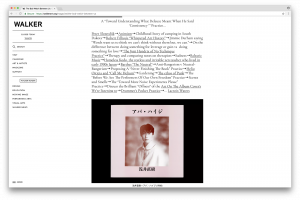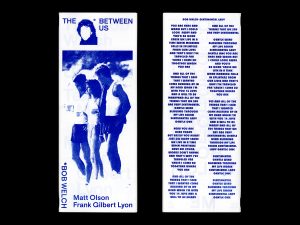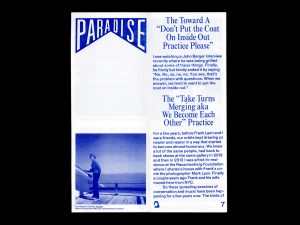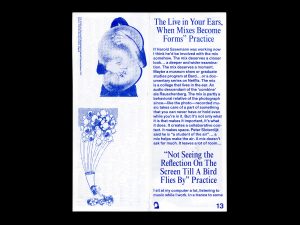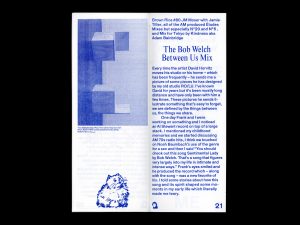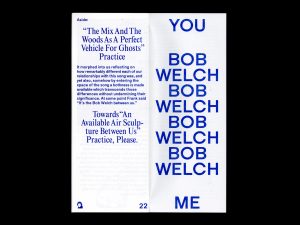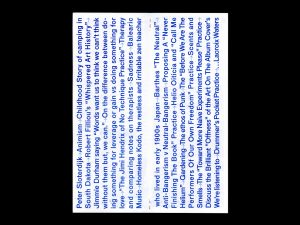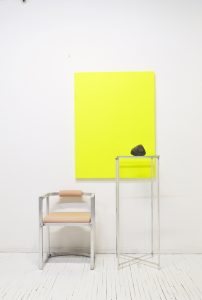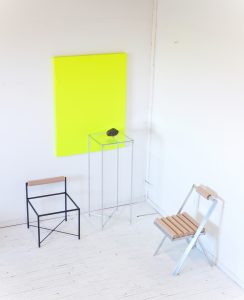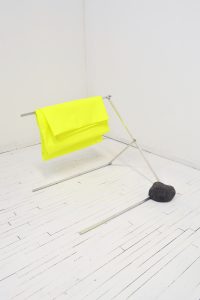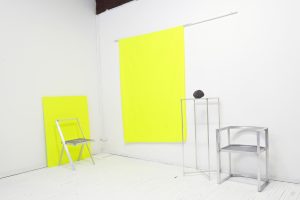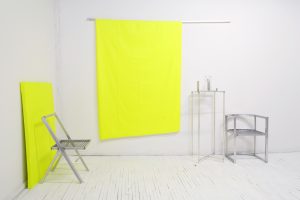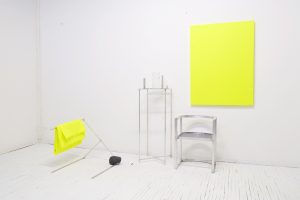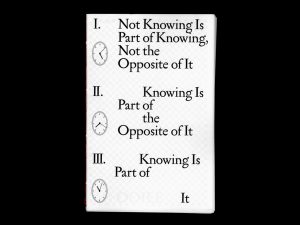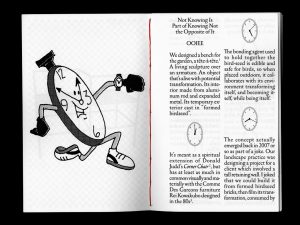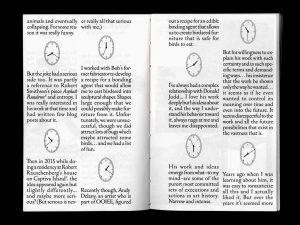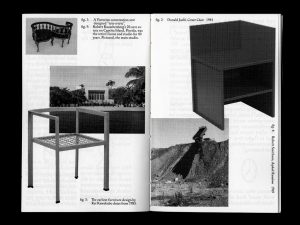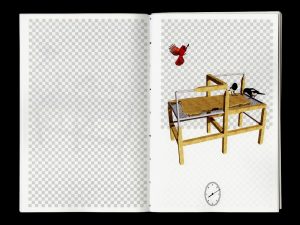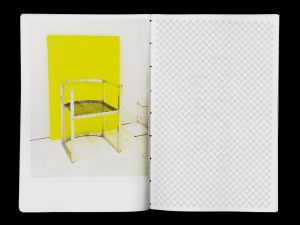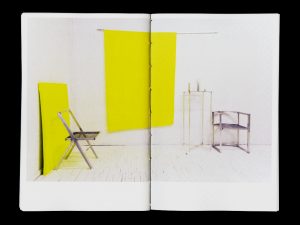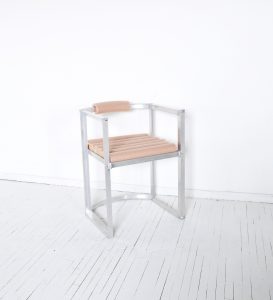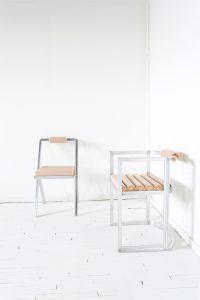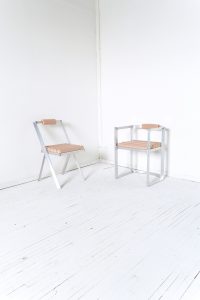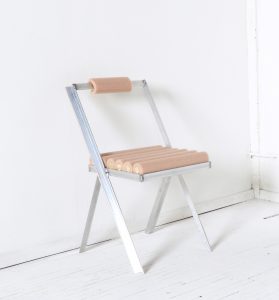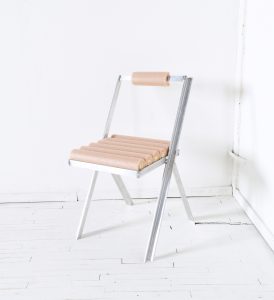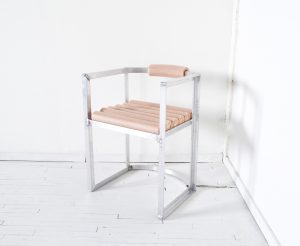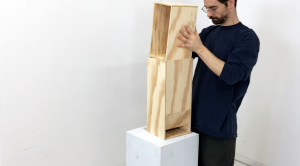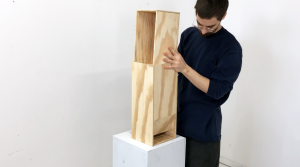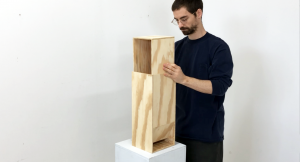OOIEE: Projects
-
“A table, a chair, an object and a conversation I wasn’t present for and did not hear. A group of things that seem to have a sort of ‘iridescence’, which is to say they are neither here nor there. It feels like my interest in them lies at an intersection of memory, language, production, projection, construction and reconstruction… but then I remember it’s not an intersection, it’s an atmosphere.” Excerpt from a text about the upcoming exhibit by/with OOIEE at company, a new space initiated by Cameron Keith Gainer – artist and publisher of The Third Rail – company is an independent space presenting artist books and publications while serving as a curatorial platform for readings, exhibitions, screenings, and performance.

-
Made for The ANNEX, an experimental show curated by Jay Ezra for M+B Gallery, these four objects are part of an ongoing open body of work exploring anonymity and art history as material. What follows is a text from the show’s catalog.
“It Is Part Of It (Anonymous Forms 1-4) are extensions of pieces originally expressed during the 60s as minimalism was emerging. The institutional, academic version of minimalism’s history often ends up being about these dominant human personalities and individuals. But we notice a persistent and related set of shapes which traveled through many different artist’s practices and we want to look more closely at them without the distraction of the artist. We want to ‘remove’ from these works, while we remake, not as a challenge to authorship, but rather as a spiritual indifference to it.
An artist associated with minimalism once said, “The world is full of objects, more or less interesting; I do not wish to add any more.” We understand this sentiment. By placing these objects in a materially uncertain and transitional form, with a potentially temporary future, we are free to experience these geometric concepts with more proximity. More intimacy. Without the residue of histories, power, capitalism, individuals etc. we can celebrate the actual form and the objects are then free to transition through a different type of collaborative consumption re: songbirds rather than galleries and institutions.
We want to create a natural performance that contains the spirit of anonymity. A ventriloquism of forms that uses art history as a material. We want to explore questions, being careful to avoid the idea that there are actual answers (that’s such a distracting habit.) Attempting to remember that, in the end, it’s not design, it’s not art; it’s not this, nor that; not speech, not silence; it’s always the same: however you approach it, whatever you call it… you are mistaken.”
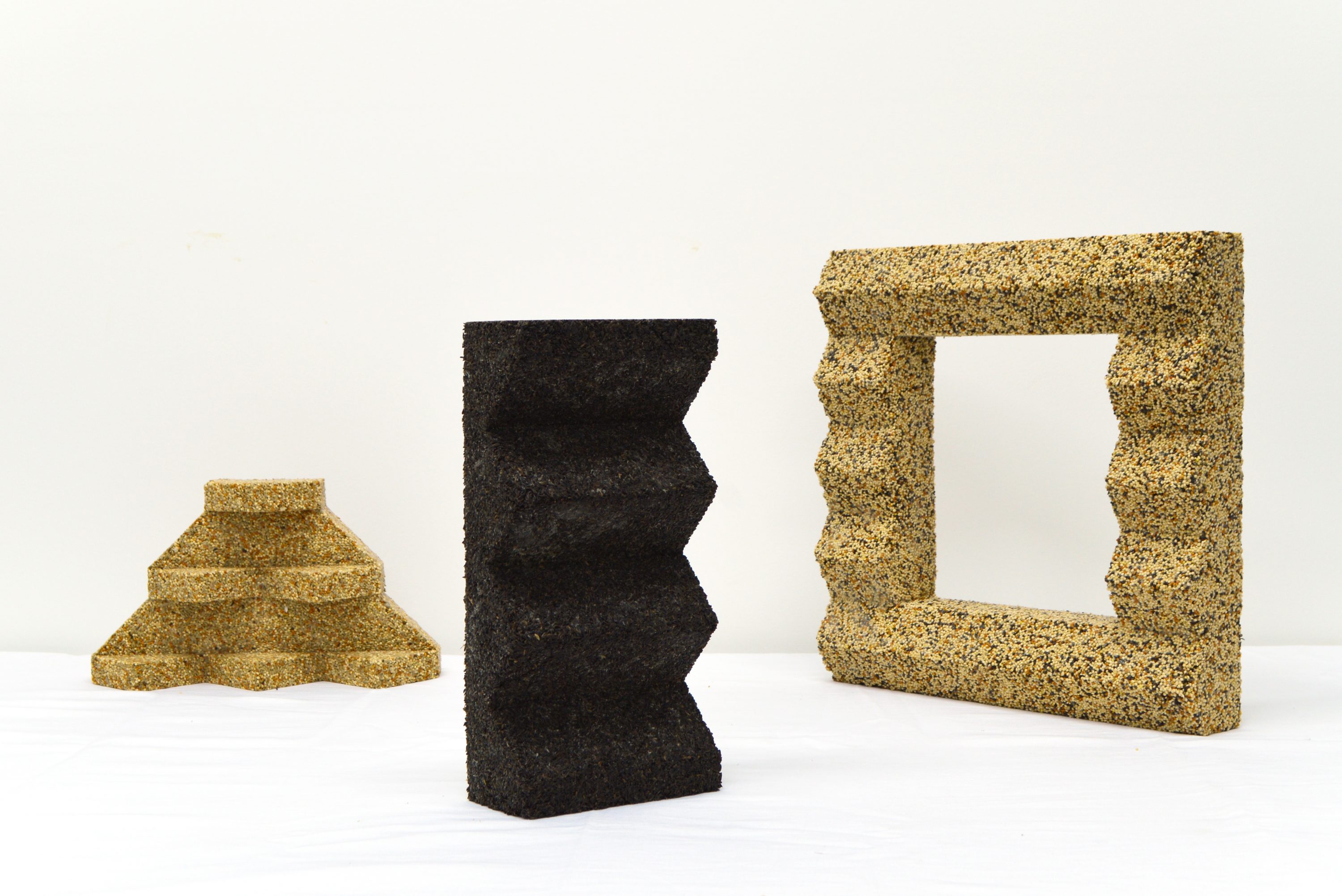
-
“Seesaw” was the last project to take place at FraenkelLab, an amazing experimental space in San Francisco affiliated with the legendary Fraenkel Gallery. Alec Soth, one of our favorite artists, invited us to create some objects and infrastructure to help facilitate a spirit of noncompetitive play in the space, which would be used to create photographic portraits of various visitors as well as serving as a platform to be activated by choreographer Isak Immanual. Alec was interested in an atmosphere for portraiture that offered both the intimacy and motion a seesaw can create… allowing portrait subjects an opportunity to sidestep the self-consciousness that can be present when one is being photographed. We thought of the space as a casual theater set that facilitated expansiveness.
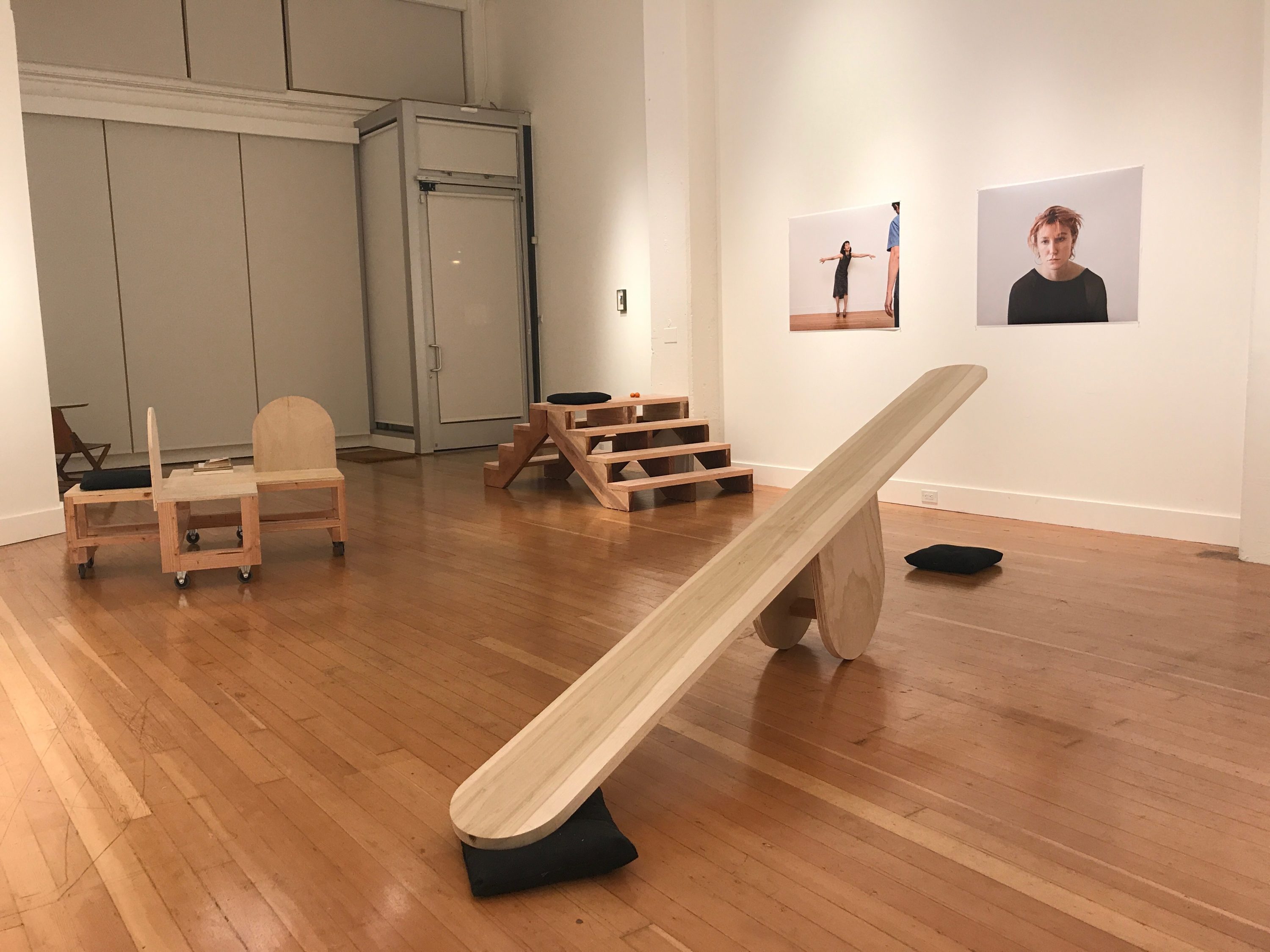
-
“I don’t know about you…” was an exhibit organized around and by OOIEE, that also included work by Ben Schwartz, Lucky Dragons (Luke Fischbeck and Sara Rara), David Horvitz, Alec Soth, Cameron Keith Gainer, Ouecha (Frank Gilbert Lyon), Sam Gould and Jo-ey Tang. The show shifted over time and across several venues, with work presented at Yeah Maybe, The Third Rail, the E&L Bindery building, the Walker Art Center Library and the Mississippi River. Presented by Yeah Maybe.
“I don’t know about you – but for me – especially as I get older, I notice that often my views about the world and how it works are really mostly just habits. Rarely inspected or even noticed… I mean we all know everything is always changing all the time but, it’s hard keeping up. Somewhere along the line I developed a habit of thinking that an art exhibition is a sorta ‘thing’ that happens in a place, over a period of time and that at some point it is over – that is to say that it’s done – and then it becomes more distant as it slips into the past. It was either good or bad, and after discerning it some, my opinions are reconciled with my identity and the various forms of currency and hierarchies of taste and such. Do you know what I mean? But that doesn’t actually reflect or describe the experience I’m having with exhibitions and the world at all. In fact, I experience exhibitions in a really messy way that seems to begin with various forms of contact with objects and ideas and people. A good exhibition becomes more and more present as time passes. Sometimes there’s a persistent energy that just keeps coming up. Not fixed, or in focus (maybe like steam is to water… ideas are to words?) The relationships I have with the experiences become more connected not less. They’re growing. So maybe an exhibition is more like a beginning? A start. Or maybe ’emerging encounter’ is a better way to say it because nothing really ever starts right? It’s hard remembering all this though because we tend to memorize these things and then repeat them… tracing them over and over. But when I do remember this more accurate messy openness… man, it’s just such a huge relief! :-)… “
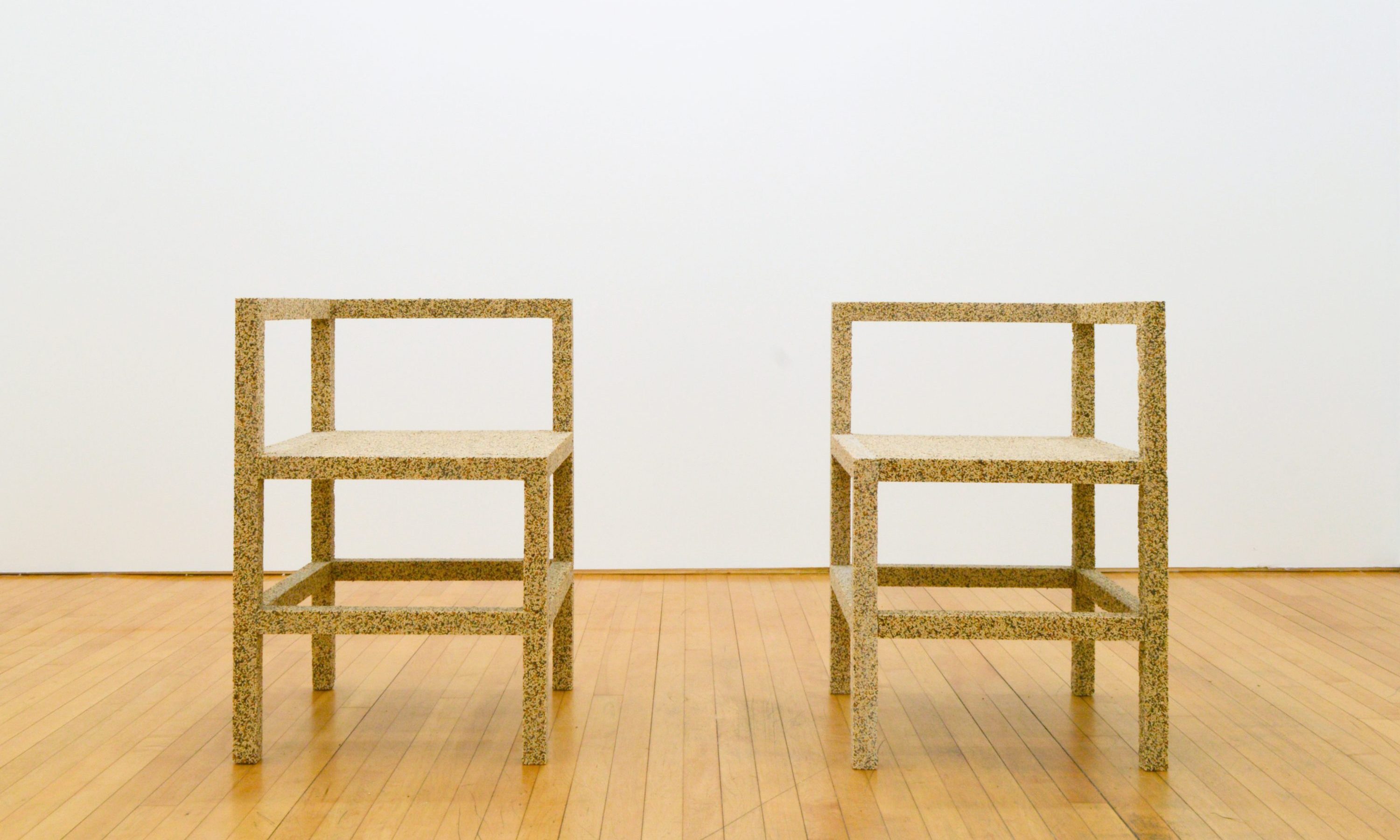
-
A sculptural experiment that Andy Delany discovered while playing in the studio one day. We knew it was the perfect piece to donate to a fundraiser for The Third Rail, one of our favorite publications (and incidentally the home of a great interview OOIEE founder Matt Olson did with then editor Jonathan Thomas). We’re happy to say the piece sold successfully and is living a happy life in the so called Cloudhouse (pictured here).
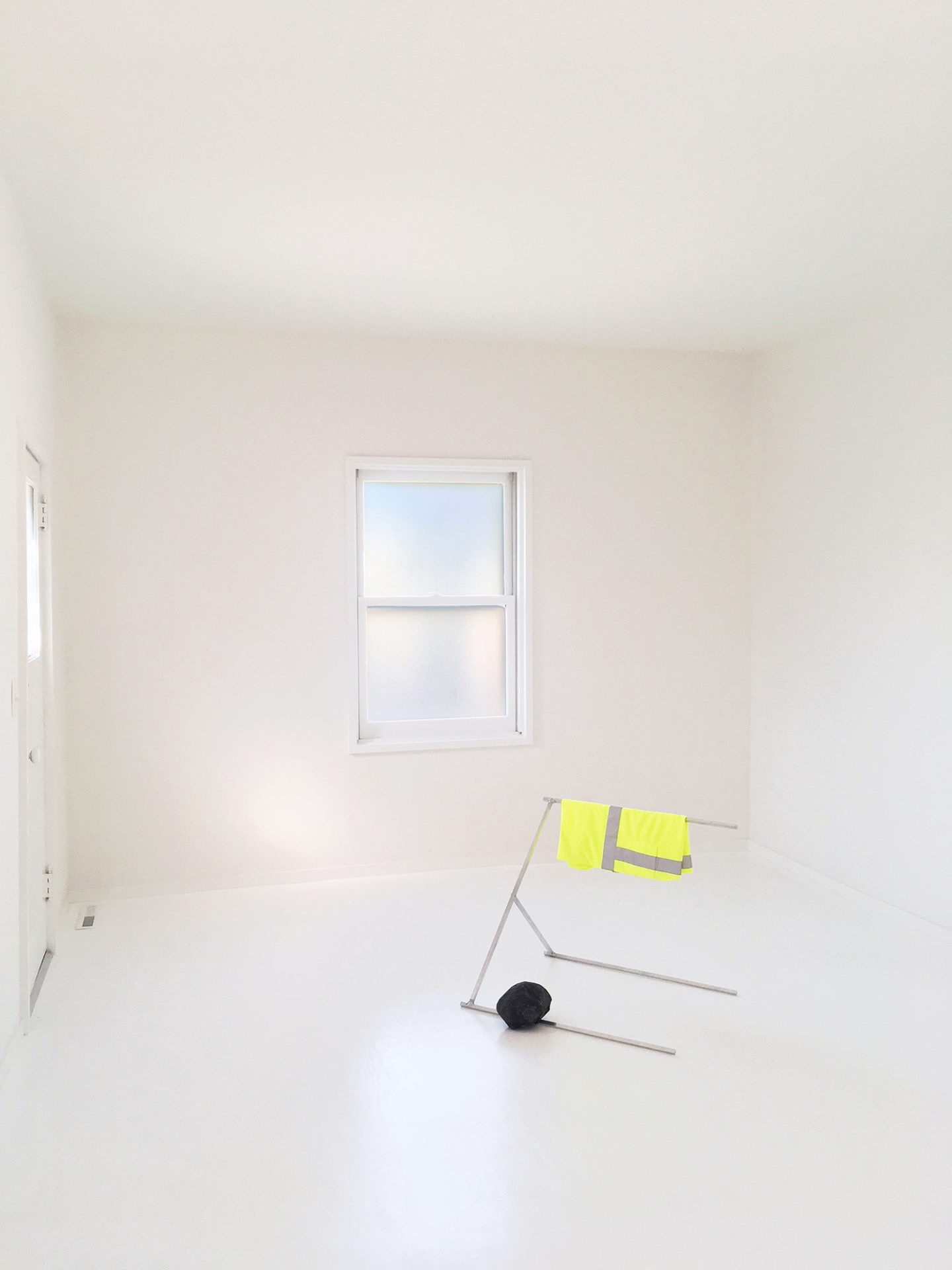
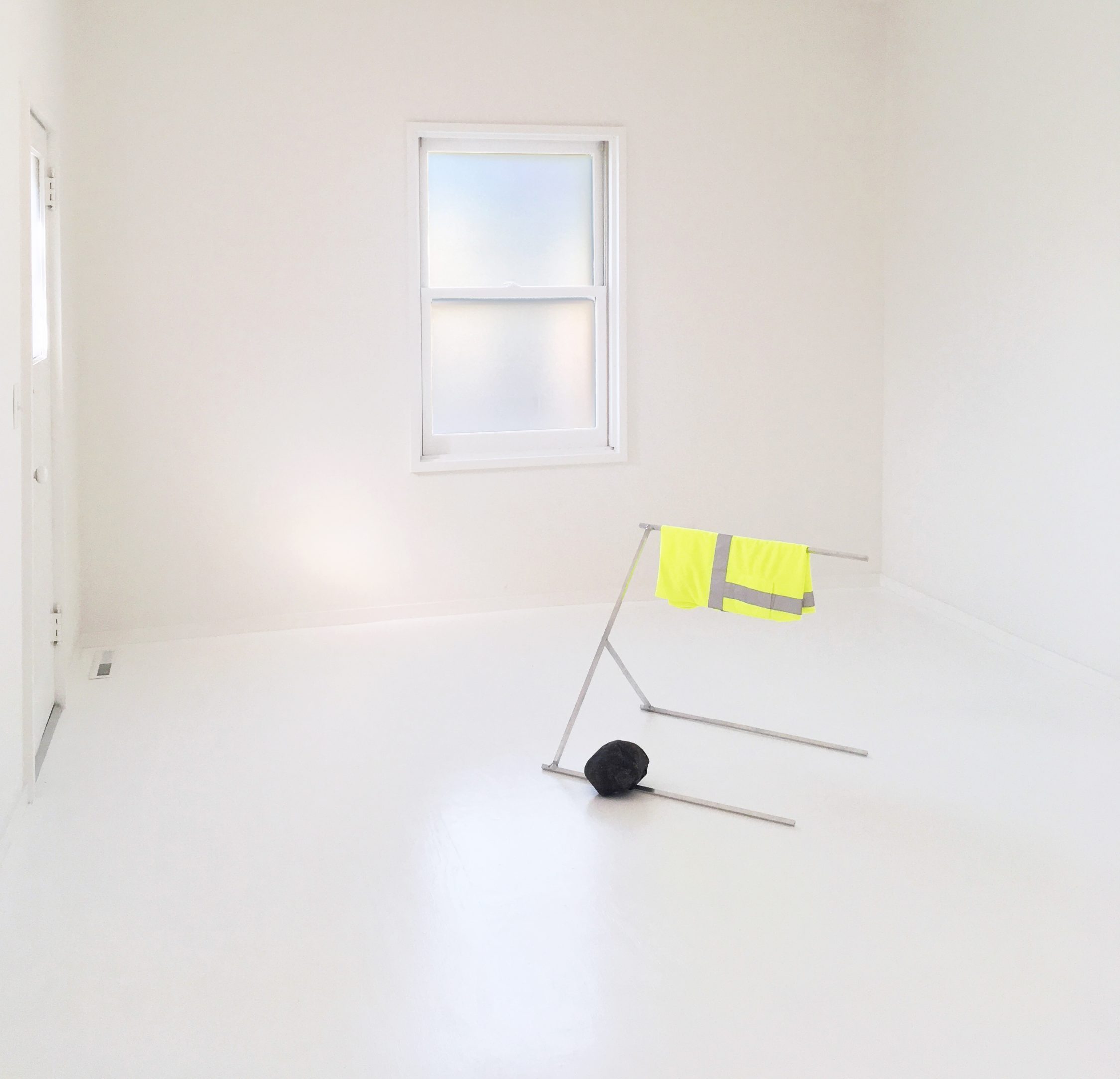
-
The Rudolph Schindler designed Bethlehem Baptist Church is an under-appreciated example of his work located on Compton Avenue in what might be Los Angeles’ most infamous neighborhood via 90s rap music and its tales of gang violence. Thus, it isn’t well positioned toward preservation the way most of his other buildings have been – sponsored by either private or institutional entities – many of which are in a strange pristine condition.
But maybe the story of this building and its various stops and starts is more interesting? “Yes, I’ve had a facelift, but who hasn’t?” was an exhibition sponsored by 501(c)3 Foundation and curated by J. Shyan Rahimi, Jessica Kwok & Adjustments Agency explores the question of ‘mis-preservation’ that has taken place here over the years.
Our project “Choosing The Voices One Wishes To Join” was a bench that broke the property line and crossed over into the neighborhood and included a collaborative performance by Lucky Dragons (Sarah Rara and Luke Fischbeck). The bench only functions as a seat when a “performance of cooperation” happens which requires two people to use their weight on each far side, which allows a person to sit in the middle space which is both connected to the building but is also located off the building’s footprint.

-
What about everything? And what would anything be without everything else? Can an object perform another object? Through performance, can an object be two things at once? (Like us.) In two places at once? (Like us.) Can it be its own author? (Like us.) Is there any such thing as a single author?
Our friend Michael Aberman took a photo of the sky above the Aspen Art Museum which was printed on large 14ft x 9ft textiles. It was to activate situations and encounters in different ways and in different places, some known, some not. The textile was used to cover sculptures by Ryan Gander, Anna Sew Hoy, and Diana Thater creating a “bothness”… a presence of an absence.
One of the textiles lay on the floor with three small robots underneath, moving it randomly around the space or, performing or behaving like Robert Breer’s piece “Rug”, which was also present. Another was covered with oranges as an extension and merger of Roelof Louw’s Soul City (Pyramid of Oranges). The fabric was also sewn into wearable garments which were available for visitors to wear both in the museum and outside.
The piece was only installed for one day.
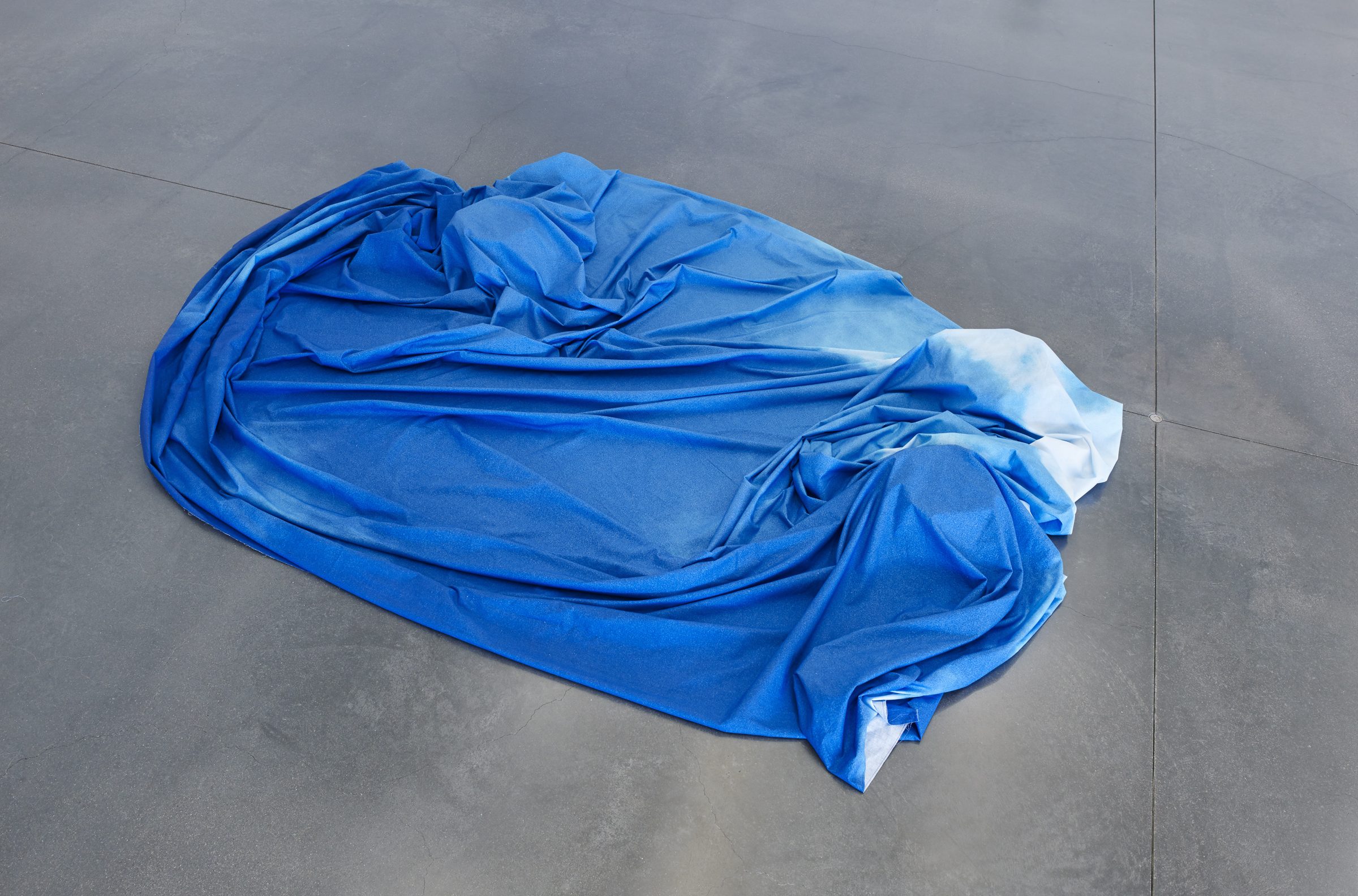
-
We encountered a mysterious object in a photo of architect Toyo Ito’s infamous “White U”, a home he designed for his sister who was grieving the loss of her husband. A pair of what looked like ladders with a platform connecting them. What was it? Who made it? Where did it go? It’s rare to encounter something in a photo that you’ve never seen before. We decided to remake it to understand it better.
The Plinth Project was a group exhibition exploring this architectural concept in new ways at Etage in Copenhagen DK. OOIEE proposed that, functionally, the photograph is the new plinth, acting as a platform for persistent objects to travel in time and through motion and memory… ghosts and flashes which emerge at their chosen pace and place.
We also created a small publication for the project with Ben Schwartz which was distributed in the exhibit. You can read the short text here. This has always been an important part of bringing something to life for us. To see it through different lenses and from different angles. It is always part of it.
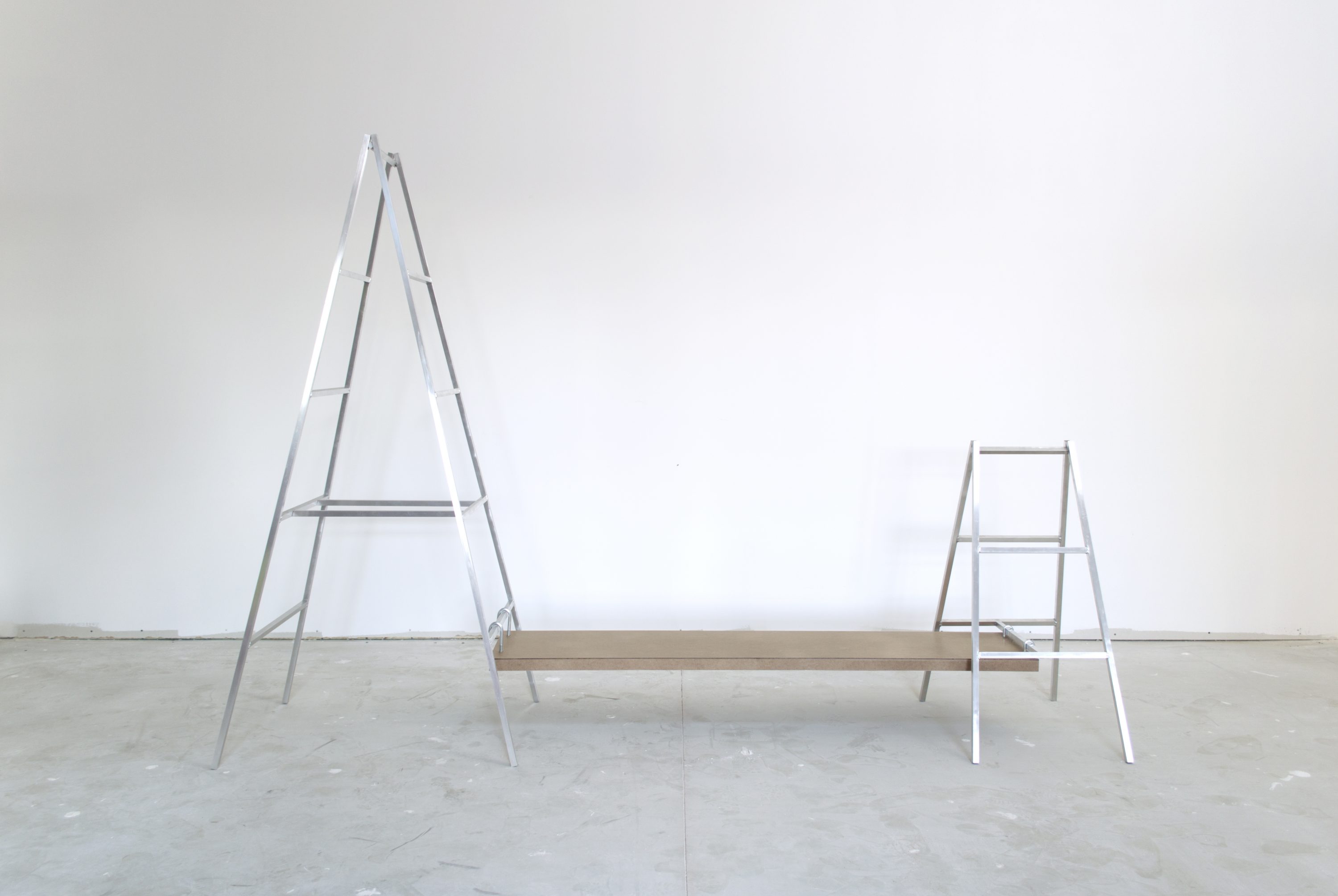
-
“John Cage …once told me, ‘When you start working everybody is in your studio – the past, your friends, enemies, the art world, and above all, your own ideas – all are there. But as you continue working, they start leaving, one by one, and you are left completely alone. Then, if you are lucky, even you leave.” – Philip Guston
A photo can operate in reverse. You might begin alone. Looking for understanding. Seeing. Orienting. Trying to find a familiar set of symbols that start to become thoughts—metabolizing the visual content–but it’s easy then to seek an arrival and an end. But some photos keep living and even after you’ve populated them and filled them with your thoughts and memories, occasionally, if you’re lucky, it leaves… but something remains.
“Jokes are like ghosts. You won’t know whether a joke is any good unless you make it. And you can’t be sure ghosts exist before you meet one. But if you do, you see.” – Jan Verwort
Some photos are like musical scores. They only really come to life when someone sits down to play them. In the beginning of Camera Lucida Roland Barthes talks of his eccentric obsession with a photo of Napoleon’s brother. But maybe it wasn’t Barthes obsession? Maybe there was something in those eyes…
In 1976, the architect Toyo Ito’s brother-in-law died of cancer at a young age. Ito designed a home for his sister and her two young daughters as the family was in mourning. The house was designed to help them through grief. It’s known as ‘White U’ and only a few photographs of its interior exist in public. The home was torn down in 1997. There’s an object in one of the photos that is mysterious. We’ve never understood it. We’ve never arrived at any sort of end with it. It won’t leave us. We don’t really see it as an obsession but, rather, as an object that has come to get us. A ghost? Is the photo a map? An amplifier? An extender? A plinth? If the photograph becomes part of us as we live with it, who’s to say we shouldn’t become the photograph as well. Using it as a script that we can trust…
Everything is always changing all the time and thus a plinth is always in motion. Rather than focusing on what a plinth “is” in the moment and trying to define it, we’re more interested in how a plinth behaves over time. What a plinth becomes. Then we see that a plinth seems to embrace humility, exists in a role of service to many different things from sculptures to architecture and sometimes becomes a photo that delivers a ghost [:-)
So this photograph that has traveled through time has been, contains and is becoming several potential plinths – material and immaterial – And the thing I love about a plinth is that it knows how to get out of its own way.
You can download a pdf copy of the zine Ben Schwartz made here.
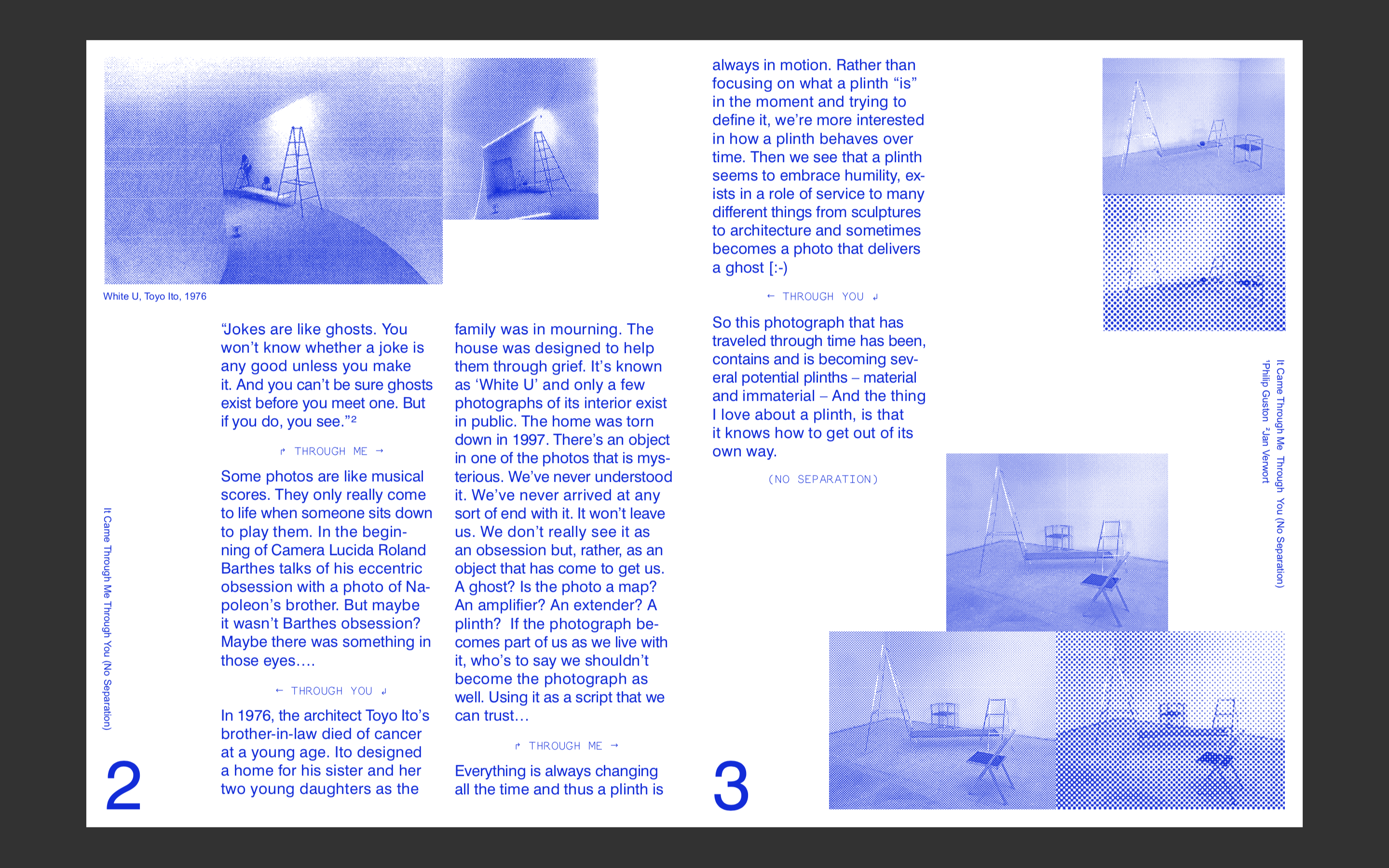
-
The Paperweight Show was the inaugural exhibit at Fisher Parrish Gallery in Brooklyn. We used the image from our project at the Aspen Art Museum and marble from a quarry near Aspen to create a functional paperweight that aspired to something more poetic. Recently, we’ve been very interested in both iridescence and reflections either created by a mirror or light coming through something… this object possesses some of both of things. It collaborates with its environment while also being functional.
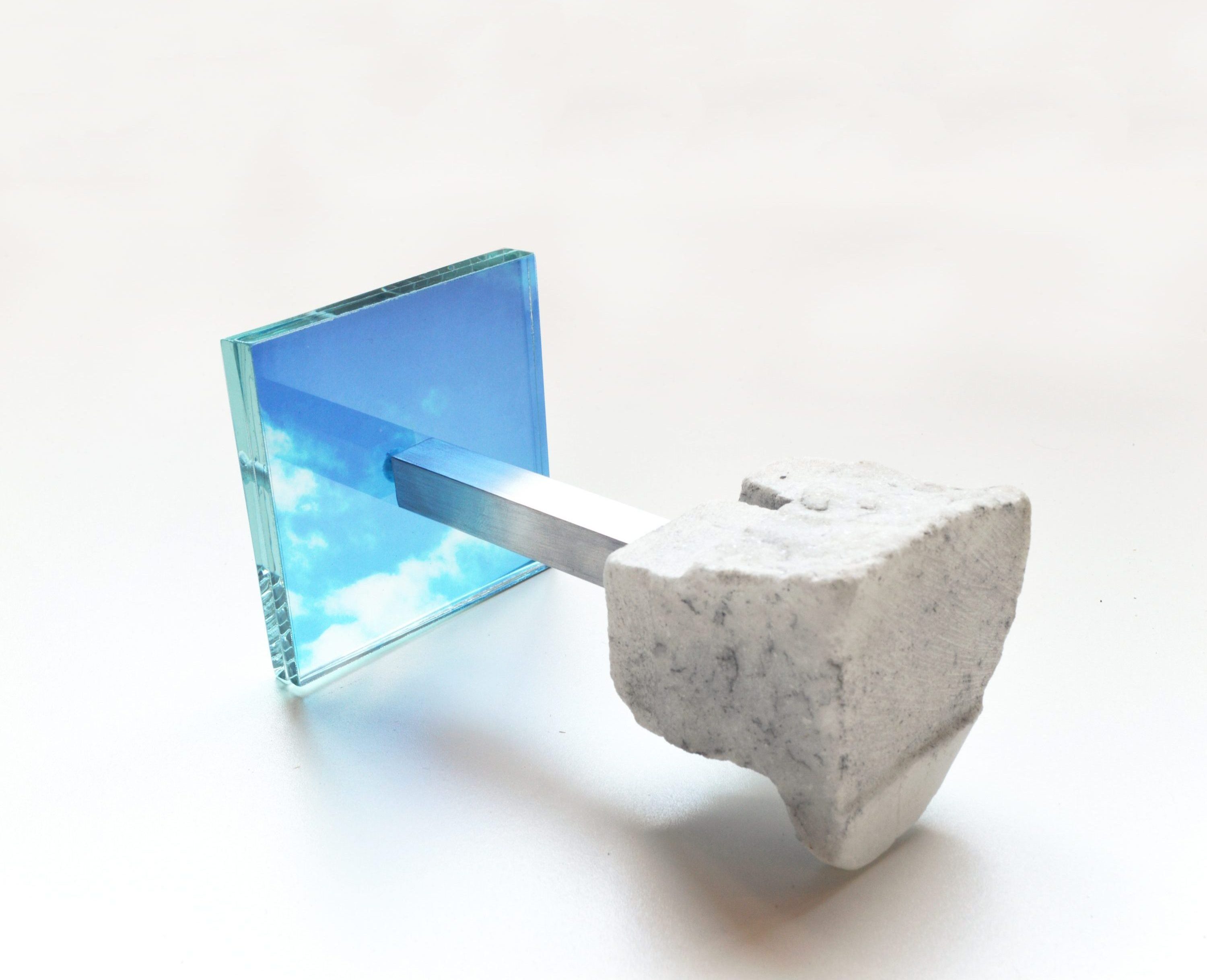
-
OOIEE was having lunch with the Design Dept. at the Walker Art Center when the topic of mixes came up. Emmet Byrne asked WE to make a mix for them to work to and OUI agreed… but WE don’t know how to make a mix. So we invited our friend Frank Lyon aka Ouecha to get involved. Suddenly there was a two hour long mix and a text about the practice of practices. Please enjoy the time and space here.
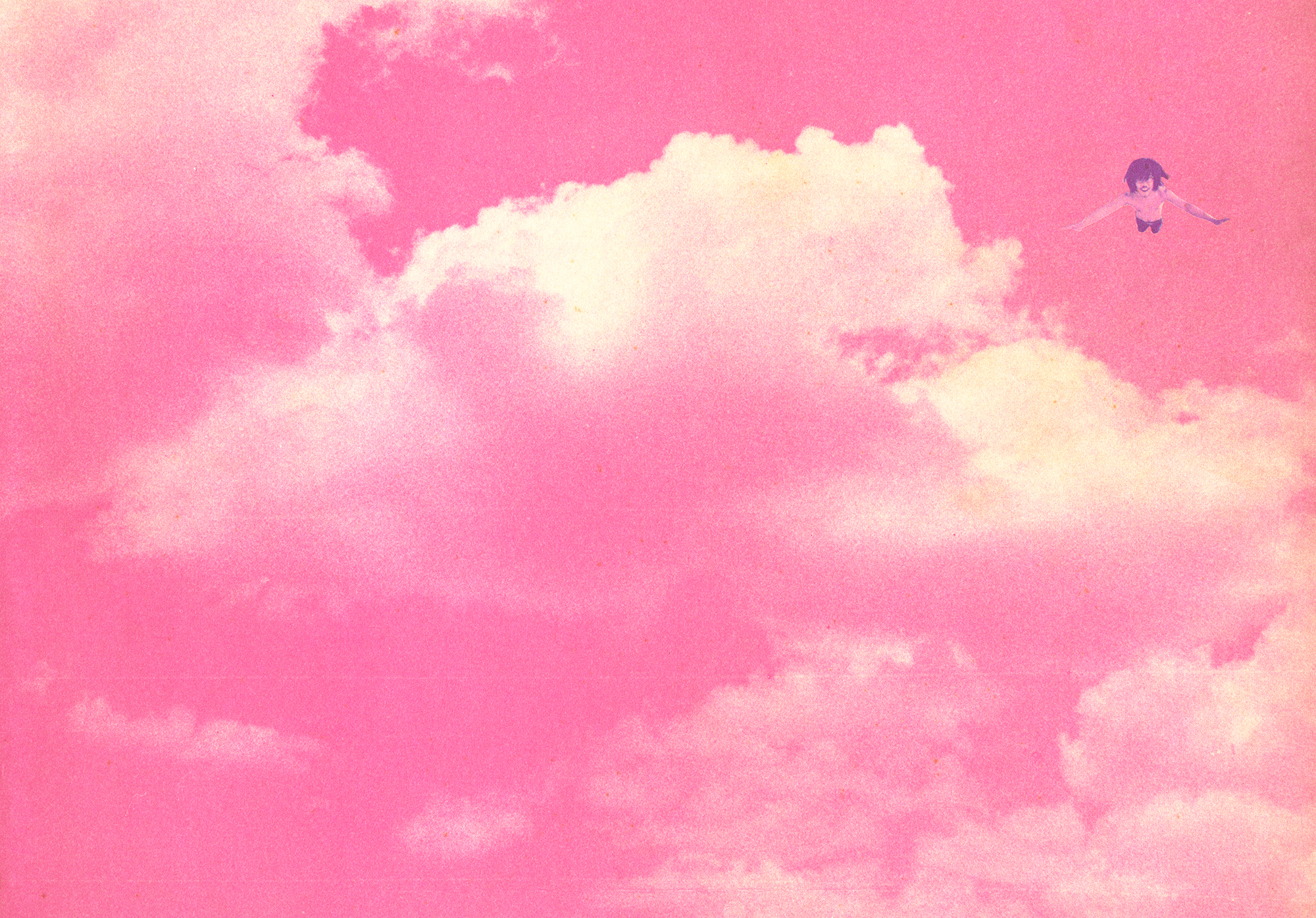
-
Hi-vis fabric and its relation to, and effect on, objects is an ongoing part of how we understand and explore the edges and difference of intensity and intimacy as well as sensations and meaning. Using photography as a way to understand the parts of our experience that we can’t have even when we’re in them.
We like the concept of something that naturally calls attention to itself.
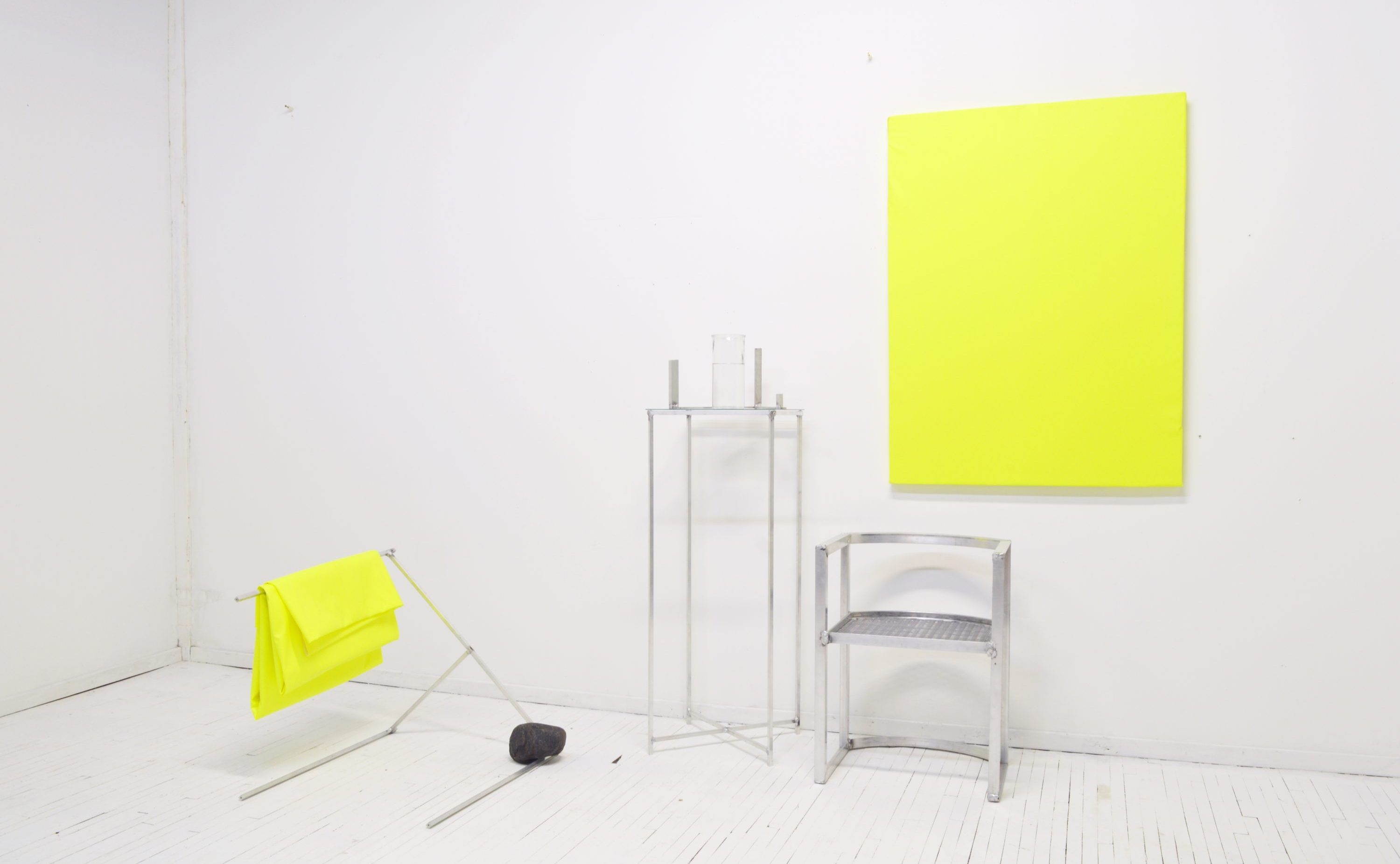
-
A proposal in the form of a publication was designed and developed with Ben Schwartz, Design Fellow at the Walker Art Center. The piece was originally intended for The Annex – a store which functions as a group show through M+B Gallery in Los Angeles – it evolved into something else. It seems to be coming to life now in another way, and that is always easy to trust.

-
Margin is a publishing project by Studio-set (Lauren Thorson and Jasio Stefanski) that uses the poster a platform for dialog. Margin 4 is a short text by OOIEE on ‘open practice’ written for a SCI-Arc Lecture on the subject. The poster contains a theoretical addendum in the form of an open call for contributions which will be activated in 2018 as a way of informally documenting change, motion and connectivity.
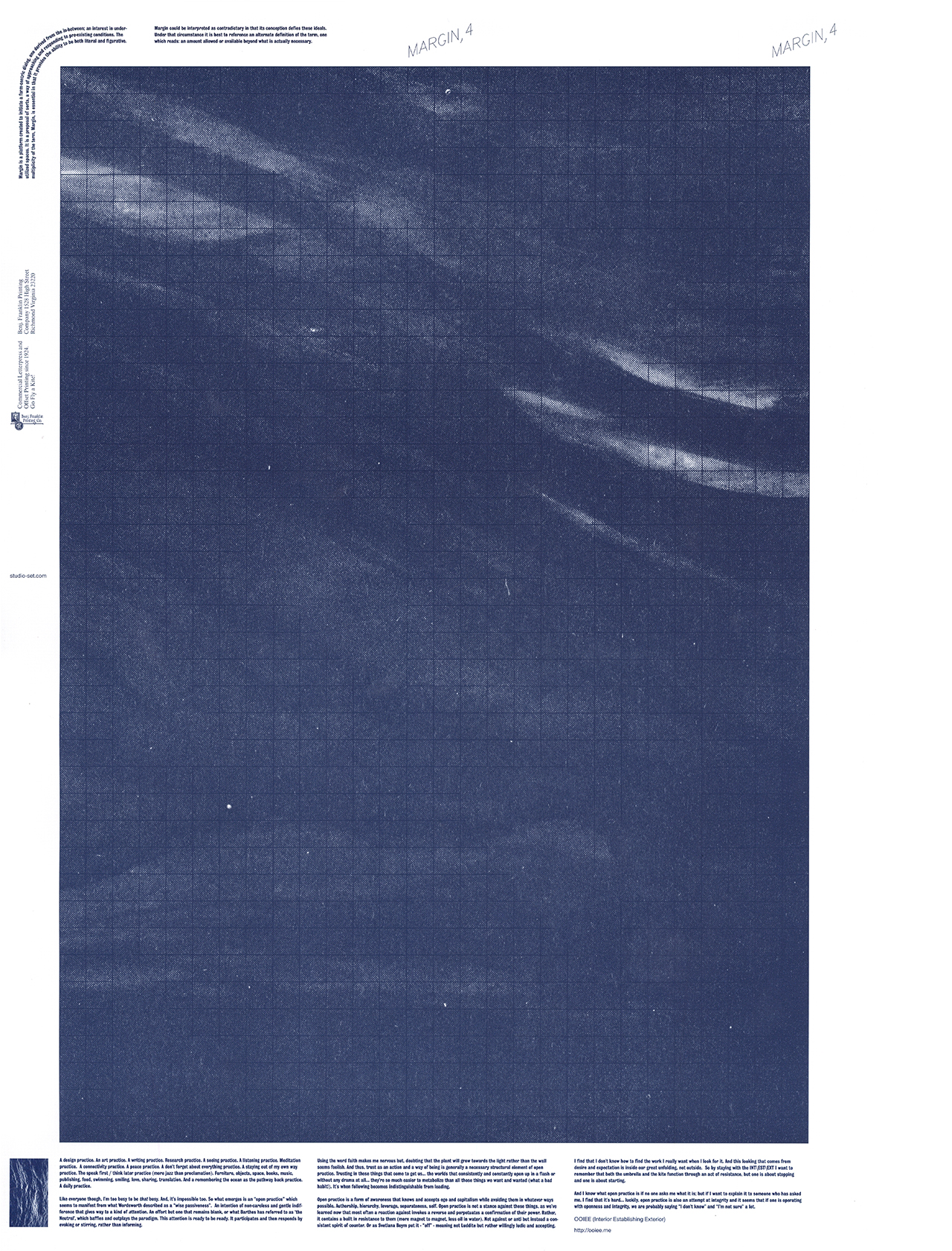
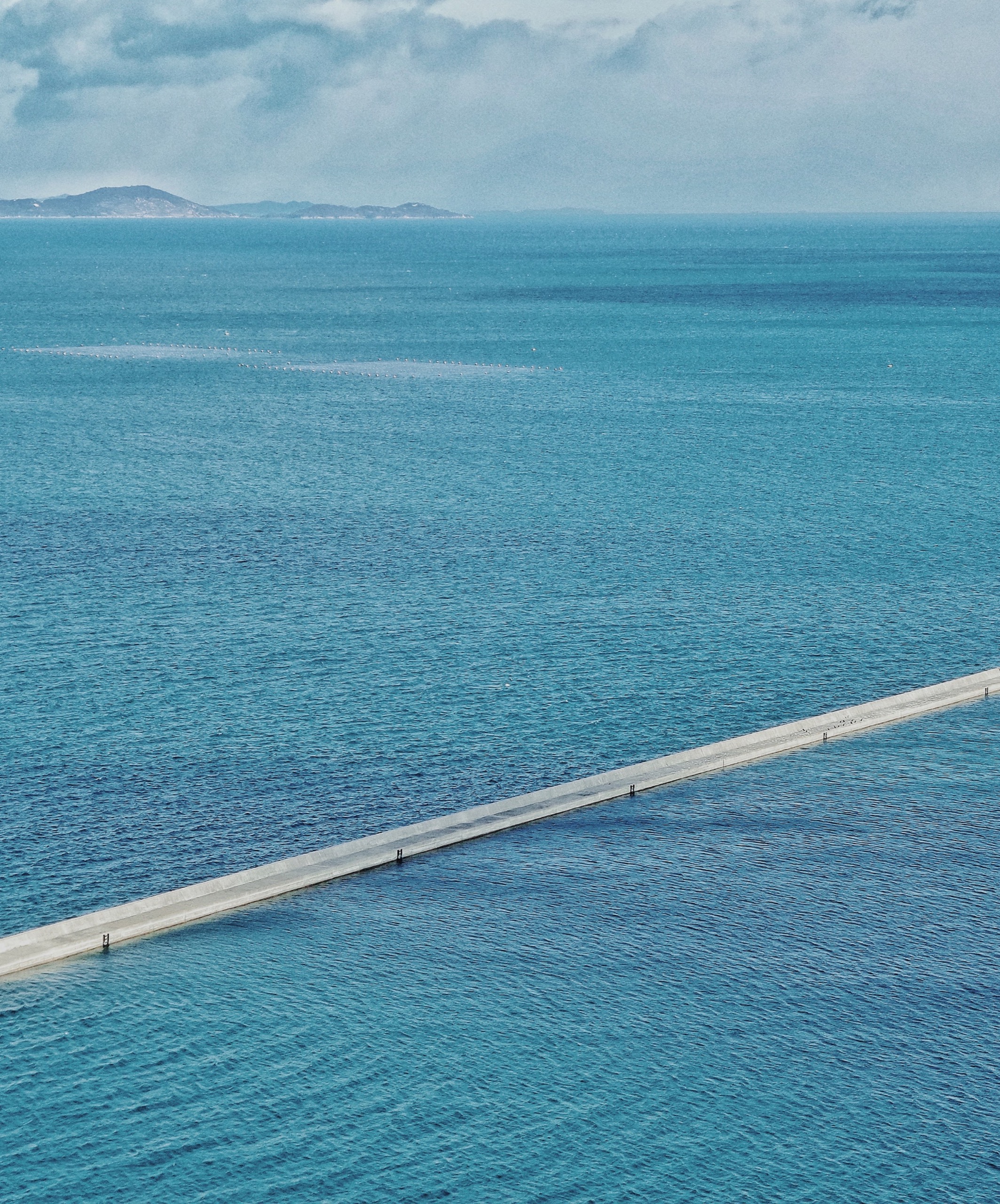
-
Aluminum angle-iron pieces we designed in 2016 which continue evolving through various micro-progressions and experiments… which is very unusual for us as we have generally preferred to work fast and fluidly rather than continually revisiting something that we’ve already created. This stage employed wood dowels and pipe insulation to create cheap, water-resistant punk cushions.
The chairs are extensions of two existing pieces, one by Rei Kawakubo / Comme Des Garcon and the other a chair design by Lawrence Voytek for Rober Rauschenberg’s studio on Captiva Island where OOIEE founder was artist-in-residence in 2013. We’ve always been interested in the notion of ‘extending’ pieces by other artists, not as a challenge to authorship in any defiant or political way, but rather in a sense of spiritual indifference to it.
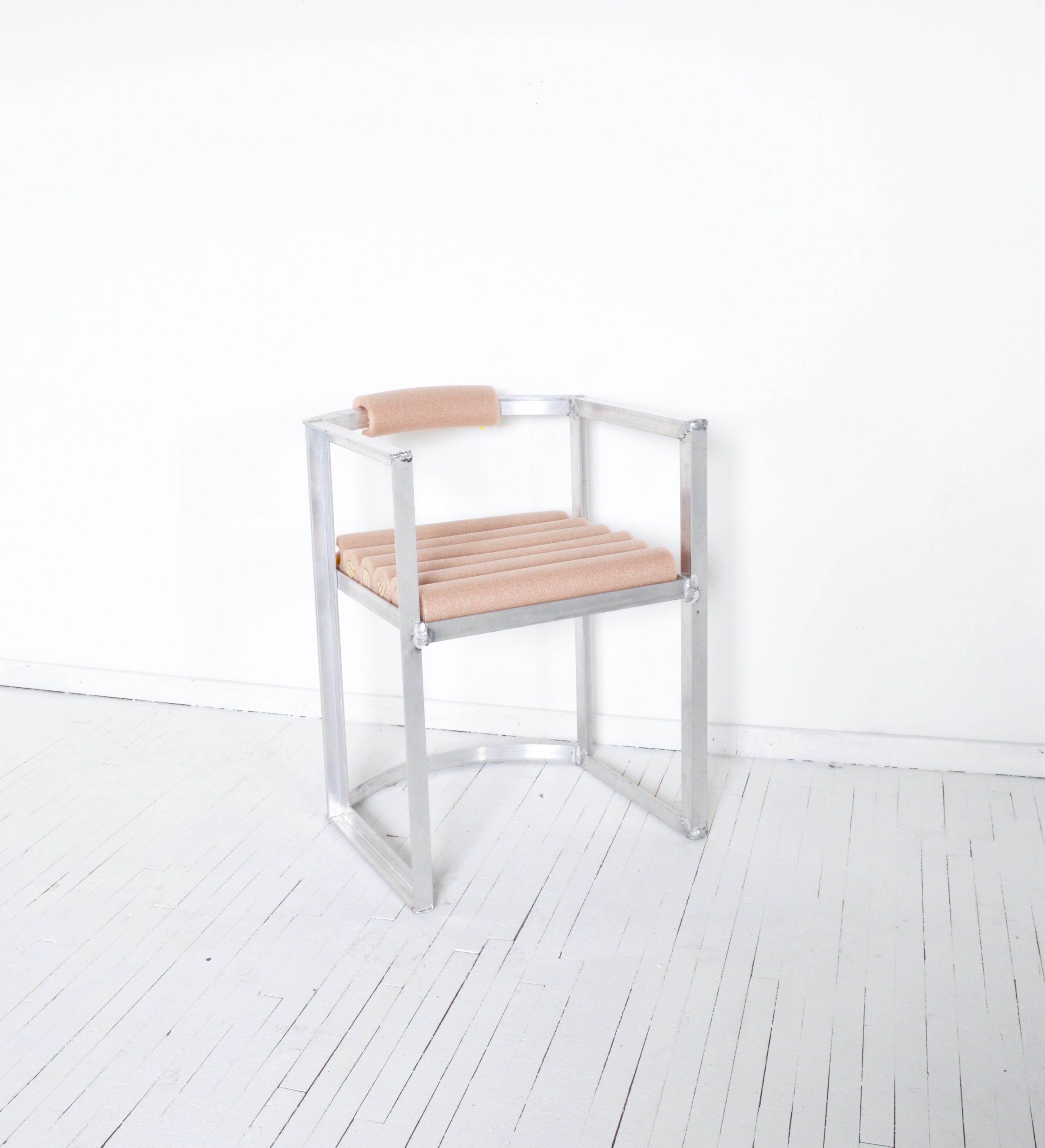
-
A commission from the Whitney Museum Shop to make “products” in relation to the 2017 Helio Oiticica retrospective “To Organize Delerium“. Oiticica is one of our favorite artists and is always close to our ideas and behavior so this was such an amazing brief for us. The notion of productness in relation to his work was such an interesting way to sidestep and at the same time embrace so many things. Oiticica represents the same spirit of punk we aspire to, a non-elite resistance to capitalism, ego and the art world in favor of embracing the transcendence of awakened experience. Unfortunately, the project didn’t come to fruition but we still think about the research and initial development we did all the time.
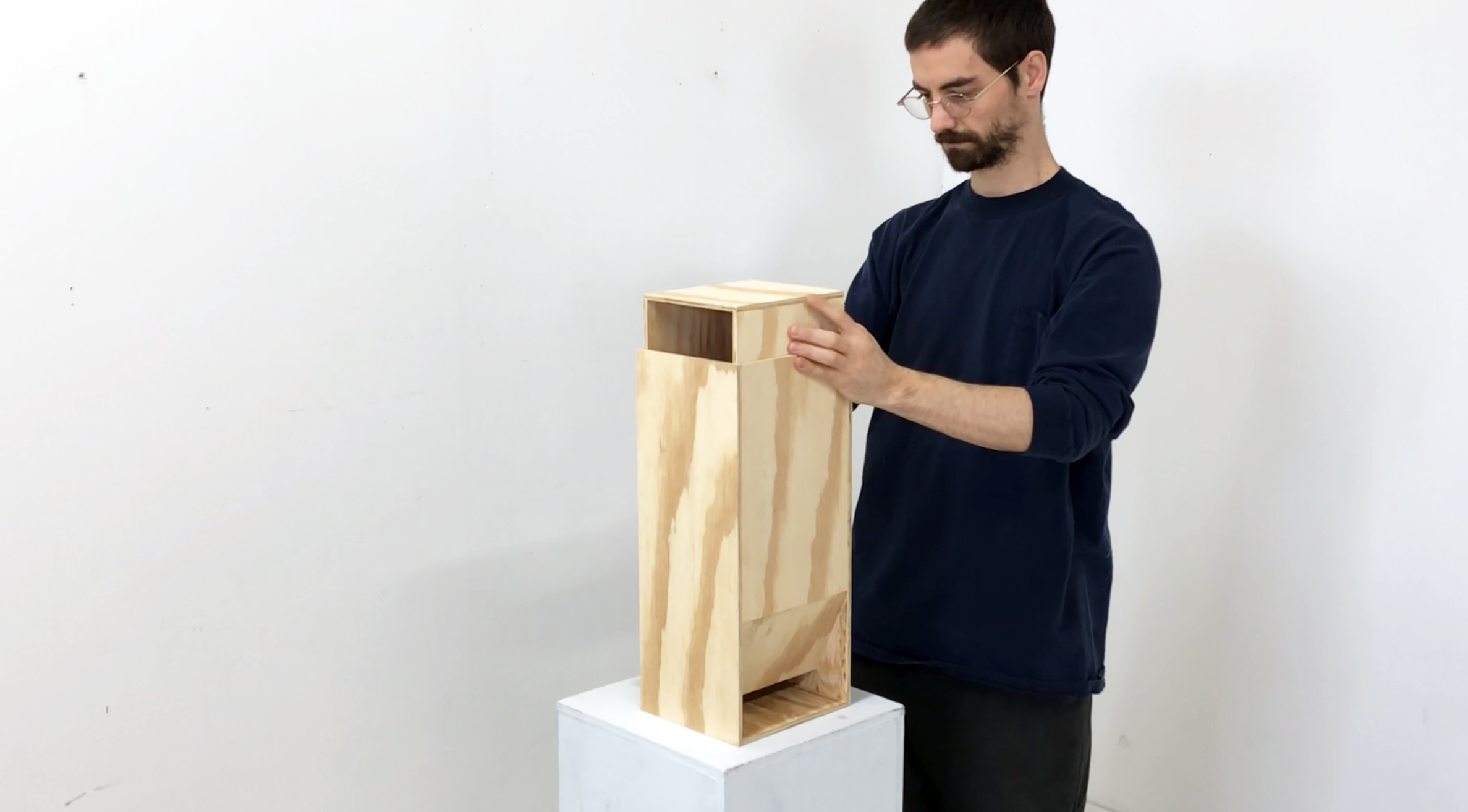
-
Our friend Ashley Helvey is the Editorial Director for The Line, a boutique in NYC/LA that presents its products in living situations and apartments rather than retail environments. She commissioned a piece for a digital project they were working on. The brief was to create a meditation on “a line” and we were drawn to the lines we see everywhere… in nature, in music, thought… we have a habit of translating almost all experience into a linear understanding. We simply filmed lines while walking in the woods near OOIEE’s home and added a soundtrack – an edit of the most linear piece of music we could think of … a piece by Charlemagne Palestine and Rhys Chatham called: “Yoouu + Meee = WEEE”. We love how it turned out.
